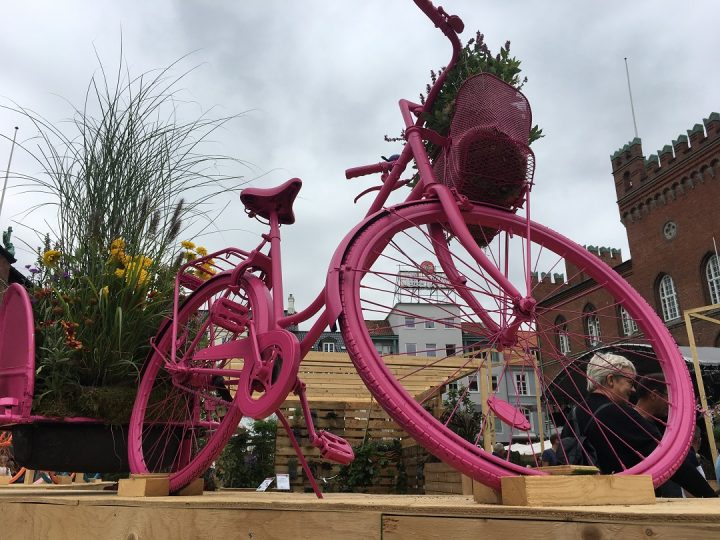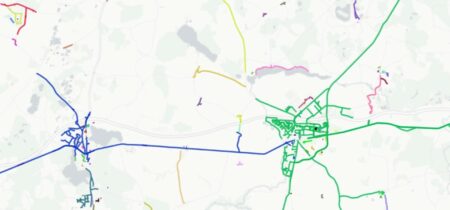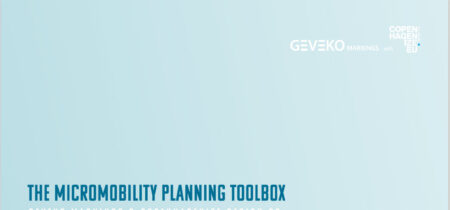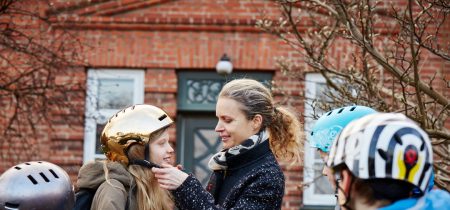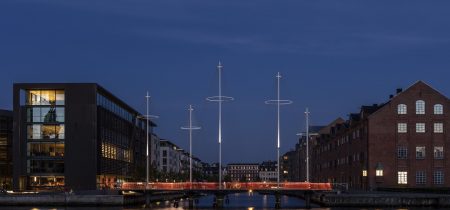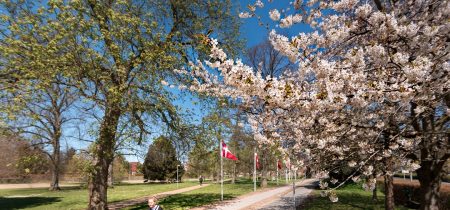Planning for more cyclists
There is an excellent potential for switching short car trips to cycle trips. More cyclists mean fewer accidents. Plan bicycle traffic in combination with collective transport, set clear goals, and don’t hesitate to use the whip and the carrot to achieve them.
By Troels Andersen, Odense Municipality
One of the things cities with increased bicycle traffic have in common is a cohesive cycling infrastructure with a high service level for cyclists, i.e. cyclists experience a good sense of security, accessibility, and comfort.
New cyclists may switch from collective transport or previous car trips. Work related car trips are the most likely. A DTU report concludes that motor traffic on short trips can theoretically be reduced by 39%. Leisure traffic would not be greatly affected (6-7%) while shopping traffic by car, perhaps surprisingly, can be reduced by 13%. There is thus a significant potential for switching from car trips to cycling (and walking). 29% of all trips in Denmark of less than 2 km take place by car, and 57% of trips of 2-4 km take place by car (2014-2017).
Willingness to switch transport mode can be further reinforced by campaigns such No Ridiculous Car trips (Ingen løjerlige bilrejser) carried out by the local authority of Malmø. Odense Municipality has carried out similar campaigns against short car trips.

- The first Danish bicycle street in Næstved also inspired other local authorities to establish bicycle streets.
Traditionally, the philosophy underlying cohesive cycling infrastructure is to encourage more people to cycle by giving cyclists a better offer (the carrot) whereas planners have been reluctant to create obstacles to motor traffic (the whip.) In addition, cycling can be encouraged by promotional activities (beating the drum). Odense City of Cyclists has been particularly active in the marketing and promoting of cycling.
The Danish cycling tradition means that there are often so many cyclists on the street that drivers are always on guard for a potential conflict between car and bicycle over a larger area , an entire city or even the entire country. When the bicycle critical mass is reached, the trend in accident development is positive. The concept is called safety in numbers.

- Safety in numbers shows that the more people cycle in European countries, the safer it is.

- Comparison of 47 Danish cities – the more people that cycle, the safer it is for the cyclists.
More cyclists mean fewer accidents. This is in contrast to the situation in many other countries where the starting point is very few cyclists. In those countries more cyclists typically mean more accidents, and thus more negative headlines and general resistance to bicycle traffic.
It is likely that high bicycle traffic levels, as in central Copenhagen and a few other city centers, trigger another mechanism where bicycle traffic seems to dominate the traffic picture and define traffic flow.
It has gradually become accepted procedure in Danish traffic planning that cars in residential areas and central neighborhoods may be diverted, whereas cyclists get the direct route. This is being challenged in several cities, and the local authorities need to stand firm on this against project developers and other stakeholders.

- Nørrebrogade in Copenhagen is an example of a radical restructuring of the street space for the benefit of cyclists, pedestrians and busses. The street is a designated strøggade, a pedestrian and cycle friendly shopping street, in the municipal master plan. Photo: City of Copenhagen
In recent years, particularly in the larger Danish cities, there has been the will to implement solutions for bicycle traffic at the expense of motor traffic. In smaller cities motor traffic traditionally has higher priority due to the larger share of motor traffic in the total traffic picture and the car’s more positive image, so bicycle traffic planners need to focus on the carrot rather than the whip.
On shopping streets there is often the desire to avoid through motor traffic, but retain at least some parking spaces for cars. Since experience shows that cyclists cannot be moved from shopping streets to back streets it’s important to keep focusing on cyclist friendly conditions on shopping streets even though this may be at the expense of motor traffic.
Never give in to the temptation to establish cycle tracks where it would be cheap and easy, – only where they are necessary. Determining where they are necessary, however, is often difficult and controversial. Cycling infrastructure should be direct, logical and easy to use, otherwise a number of cyclists will choose routes that are not planned for bicycle traffic. Worst case scenario is they stop cycling altogether.
Combination trips
Cycling is a transport mode competing with other transport modes. The daily commuting trip by bike should be able to compete with the car and collective traffic. However, the type of transport mode potential cyclists come from varies greatly depending on the city. The collective traffic options available as well as the size of the city (and thus the length of the trip) determine whether the bicycle is primarily competing with the car or with collective traffic. New cyclists in Copenhagen, for example, will typically be drawn from collective traffic whereas the opposite is the case in smaller cities.
Good coordination between bicycle traffic and collective traffic improves total competitiveness. This applies to the option of bringing a bicycle into collective transport and good bicycle parking facilities at stations and bus stops. The new light rail in Odense, for example, will allow bicycles with no time limit.

- Bicycles are now allowed on S-trains at all times of the day in the Danish capital region. This is one way of making a car free life style possible. (photo: City of Copenhagen)
Traditionally, bicycles were allowed on trains and to a limited extent buses. However, it appears that bus companies are now showing a greater interest in allowing bicycles. Movia and FynBus allow bicycles on busses, in fact bicycles are now allowed on more than 300 Movia bus routes. BAT on Bornholm where there are many tourists, offers busses with space for five bicycles, which can be booked on-line in advance.
Ojectives
Danes cycle primarily because it’s easy and fast, but increasingly for the exercise you get from a daily cycle trip. This should be reinforced in cycling infrastructure planning. The subject has been discussed in various bicycle accounts. Studies show that citizens are concerned with the health aspect especially in the cities of western Denmark. In eastern Danish cities (for example Copenhagen) the focus is on the bicycle as the fastest transport mode, while health is secondary.
The fact that cycling is environmentally friendly, for example when it comes to CO2 emissions and particle pollution, does not play a significant role for individual citizens when questioned about their reasons for cycling. However in a municipal planning context lower air pollution and improved public health are of course extremely important factors.
It’s important to have clear objectives for bicycle traffic development in order to stay on course and keep focused. Qualitative objectives, such as “more cyclists”, are relatively imprecise and non-committal.
Quantitative objectives such as “by 2025 x% shall cycle to their place of work or education in this municipality” are more ambitious.
The objectives for bicycle and pedestrian traffic should be split up so the two traffic modes can be followed independently.
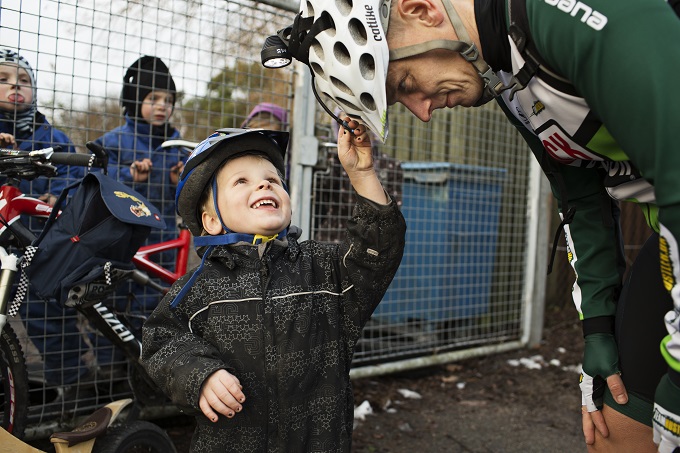
- If your goals are high but realistic you have a better chance of achieving them. Photo: Danish Cyclists’ Federation
The whip, the carrot and the drums
In the present context the whip could be parking restrictions for motor vehicles, and fees, regulation of the number of cars allowed into central urban areas, road pricing, congestion charges, etc.
The number of cars allowed into the city can be controlled to a certain extent by traffic light regulation. In Copenhagen the lights are adjusted so that the queues occur on the motorway into the city, rather than in the city itself.
Paid parking, both the number of parking spaces and the size of the fee, are common traffic regulation measures in many larger cities, primarily as a means of creating a city center with less traffic. However there are government restrictions on new paid parking spaces or increased fees based on the idea that the local authorities shouldn’t use paid parking as a source of revenue. This means that the revenue is deducted from the authority’s block grant.
Congestion fees or road pricing may not be introduced by the local authorities according to Danish law. Kristiansand, Stockholm, and London have experience with charges and road pricing. One of the issues connected with restrictions is the question of how effective they are in calming traffic and promoting alternative transport modes. Another issue is the question of who should control the revenue and how it should be spent. In Kristiansand some of the revenue is used to improve the cycling infrastructure of 6 local authorities in the region.
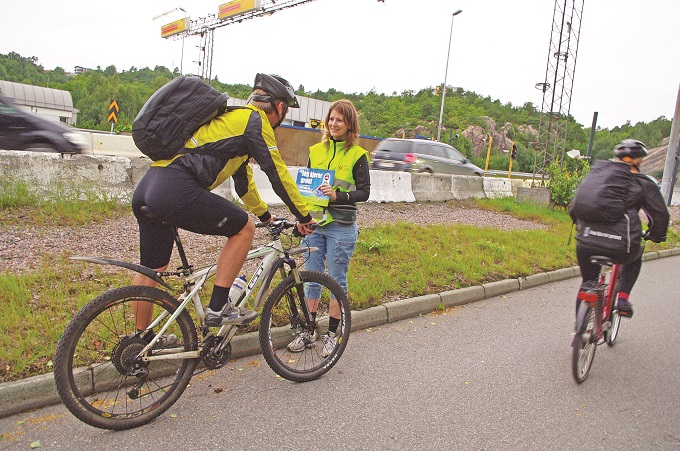
- During a campaign in Kristiansand cyclists were given a 10 nkr cash refund for cycling. Photo: Marianane Bliksåst
One of the carrots in the context of getting more people to cycle is a good, cohesive, high quality cycling infrastructure. Also important is the feasibility of combining bicycle traffic and collective traffic, since it can improve the competitiveness of both in relation to the car. Drums include cycle campaigns, which are discussed in a separate article. See “Information and campaigns”.
Sources
Linda Christensen og Thomas C. Jensen (2008): Korte ture i bil – Kan bilisterne ændre adfærd til gang og cykling. DTU Transport.
European Cyclists’ Fedration Road Safety Charter: Halving injury and fatalily rates for cyclists by 2020. ECF 2010. www.ecf.com
Søren Underlien Jensen (1998): DUMAS – Safety of Pedestrians and Two-wheelers. Note 51. Vejdirektoratet.
Fra god til verdens bedste, Københavns cykelstrategi 2011 – 2025.


